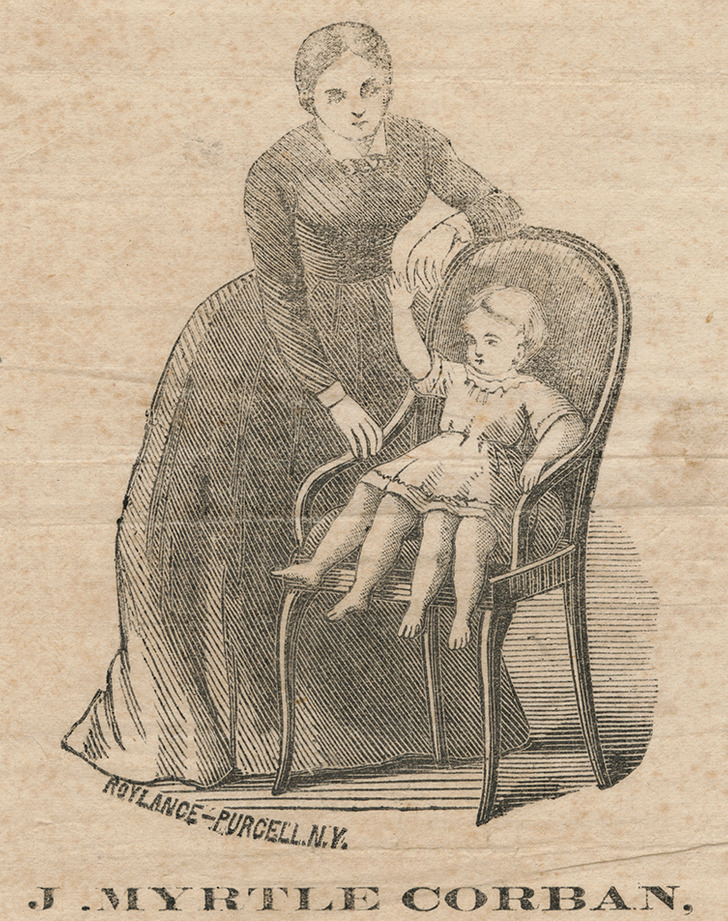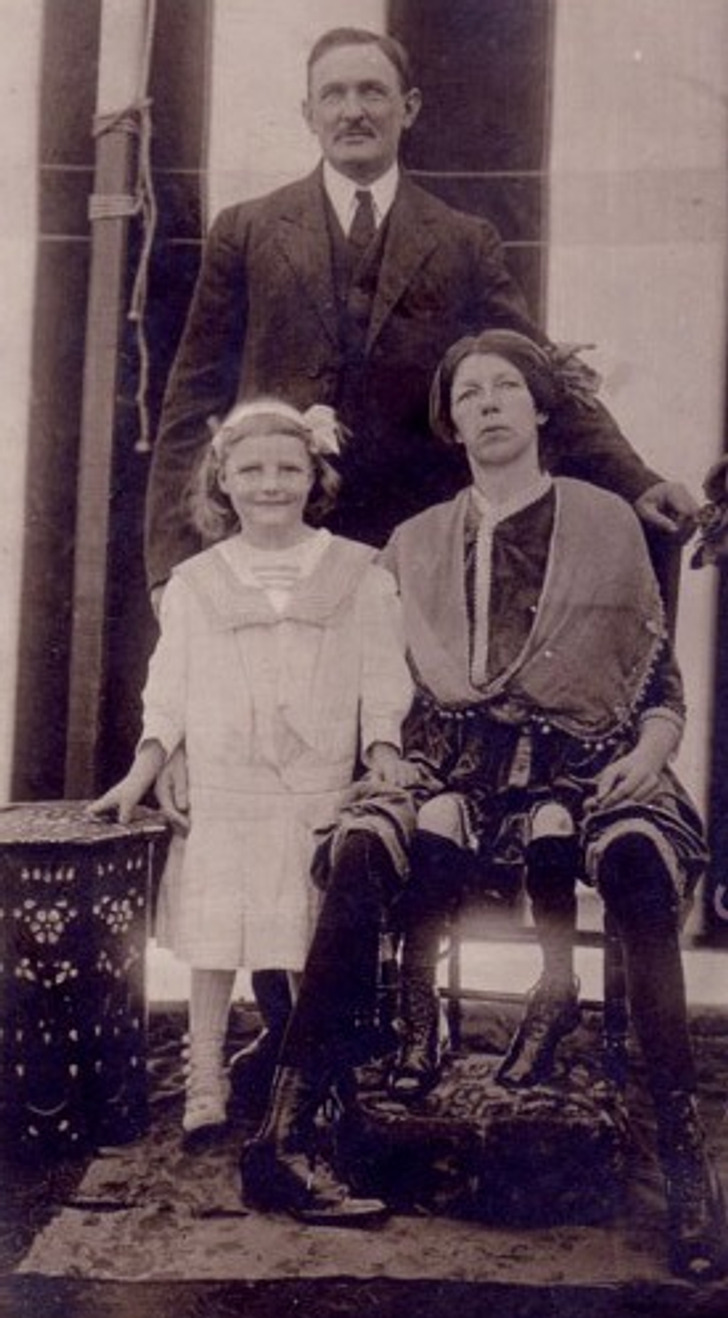Josephine Myrtle Corbin was born with a rare birth defect called polymelia, meaning born with extra limbs, in her case, she had 4 legs, 2 normal ones and 2 smaller ones that grew from her hips. But there was more to it. She also had 2 sets of reproductive organs and 2 pelvises. Because of this rare occurrence, she’s probably one of the few people in history considered wonders. Let’s delve into Myrtle’s story and discover her exceptional life milestones.Myrtle was considered a rare and remarkable case of human development.
Josephine Myrtle Corbin, an American sideshow performer, came into the world in 1868 as a remarkable medical rarity. Affected by a condition known as dipygus, she possessed two lower bodies from the waist down. This unusual phenomenon occurred due to her body axis splitting during development, resulting in two separate pelvises side by side. Remarkably, her smaller inner legs were paired with one of her outer legs. While Myrtle could move her inner legs, but they were too weak to walk on.
Born in Tennessee to her parents, William and Nancy, Myrtle’s arrival brought both wonder and concern. At 25, her father, William, and 34-year-old mother, Nancy, welcomed the unique little Myrtle into their lives. Medical professionals noted that if Myrtle had been delivered breech, with her bottom first, it could have been potentially fatal for both her and her mother. Thankfully, Myrtle’s early days were promising, as she displayed signs of strength, weighing 10 lb (4.5kg) just 3 weeks after her birth.
Myrtle’s father was facing financial hardship and had to think of ways to support his growing family.

© Charles Eisenmann (1855-1927) / Wikimedia Commons, © Public domain, © Palette.fm
At the age of 5 weeks, people had the opportunity to visit William Corbin and marvel at his four-legged daughter for a small fee. As the years passed, Myrtle grew up accustomed to the constant stares and astonishment from those who encountered her rare condition. Her inner legs never fully developed, her right foot was clubbed, and both of the smaller legs had 3 toes on each foot.
Over the following decade, William took Myrtle on a journey across the country, where she participated in fairs, sideshows, and dime museums. By the time she turned 14, she had achieved success and managed to secure a lucrative contract paying her an unusually high salary of $250 per week.
The four-legged girl, Myrtle, had a younger sister named Ann, who fortunately did not suffer from any birth defects.
Myrtle married when she was 18 and later became a mother.

© James R. Applegate (1849–1910), Philadelphia / Wikimedia Commons, © Public Domain, © Palette.fm
As Myrtle entered adulthood, she grew weary of the constant attention she received due to her condition. At 18, she decided to marry James Bicknell, a medical student, after which she retired from her performing career. Interestingly, her fame had inspired others to attempt to fake her unique deformity, but all of these impostors were eventually exposed as frauds.
A year into their marriage, Myrtle experienced troubling symptoms like fever, nausea, headaches, and side pains. Concerned, she sought medical attention, and to her disbelief, the doctor revealed that she was pregnant on her left side. Myrtle skeptically responded, saying, “If it had been on my right side, I would come nearer believing you are correct.” The pregnancy proved challenging for her health, and doctors even advised her to consider an abortion due to the severity of her illness. However, Myrtle managed to recover swiftly.
Over the following years, James and Myrtle welcomed seven more children into their family. Tragically, only 5 of them survived infancy, 4 daughters and a son.
© Unknown author / Wikimedia Commons, © Public Domain
The family lived a quiet life until their 5 children reached adulthood. Then Myrtle re-entered the show business. In 1909, when Myrtle was 41, she was a part of Huber’s Museum exhibit, appearing as The Four-Legged Girl from Cleburne, Texas. She often dressed her 4 legs in matching shoes and socks, to the audience’s delight. She was making $450 per week at the time.
In 1928, Myrtle developed a skin infection on her right leg, and the doctor diagnosed her with erysipelas or a strep infection. A week later, on May 6th, 1928, Myrtle passed away. Her casket was covered in concrete, and family members kept watch until it was fully cured to prevent grave robbers from stealing her remains.
Almost a century later, Josephine Myrtle Corbin Bicknell continues to inspire others by proving that even in the 19th century, a woman could forge a successful career and become a mother all at once.
My Stepdaughter Surprised Me with a Car for My 55th Birthday, Discovering What Was Inside the Glove Box Left Me Speechless

Receiving a car from my stepdaughter, Emily, on my 55th birthday was the last thing I expected, especially given our rocky relationship. She handed me the keys and mentioned there was another surprise in the glove compartment. What I found inside changed everything between us.
Being a stepmom often feels like a balancing act, trying to be a parent without overstepping boundaries. For ten years, I navigated this tightrope with Emily. I met her father, David, at work, and after becoming friends, we started dating. He had lost his wife a year before we met, and his focus was on Emily, his cherished daughter. As our relationship deepened, I wondered about our future together. David expressed his love for me but worried about how Emily would react to a new stepmother.
When I married David, I knew it would be complicated. Emily was only 12 and still grieving her mother. My first meeting with her was tense; she barely spoke and quickly retreated to her room. This set the tone for our relationship. I tried my best to connect, but she remained distant, polite but always keeping me at arm’s length.
I remember putting together a surprise party for her 13th birthday, hoping it would help us bond. Although she smiled at the decorations, she still held back emotionally, creating a barrier between us. Despite the challenges, David and I were happy together. However, everything changed when David died in a car accident five years ago, leaving Emily and me to navigate our grief alone.
In that dark time, I promised to be there for Emily. But even as we became each other’s only family, I sensed that she merely tolerated me. As she grew more independent, starting a career in marketing, our interactions felt more like a formality than a genuine connection. I longed for a warm relationship, but it often felt one-sided.
Last Thanksgiving was particularly hard; Emily barely acknowledged me at a family gathering, deepening my feelings of being an outsider. So, when Emily called just before my birthday to take me out for a special dinner, I felt a flicker of hope. She picked me up in a sleek red convertible, and I thought it might finally be a sign of her acceptance.
When she handed me the keys, her voice felt distant and flat, almost like she was just fulfilling an obligation. I managed to thank her, but the dinner felt awkward and forced. It was hard to shake the feeling that the car was more of a way to alleviate her guilt than a genuine gift.
As we parked, Emily mentioned another surprise in the glove compartment. My heart raced as I opened it, revealing a stack of drawings from her childhood. My breath caught as I saw the stick-figure versions of us, with me labeled as “Mom” and captions like “Mom and Me”.
Tears filled my eyes as the realization hit: Emily had seen me as her mom all along, despite the distance between us. When I expressed my shock, she admitted she loved me but felt guilty calling me “Mom” because of her birth mother.
In that moment, the walls that had stood between us for years crumbled. We embraced tightly, tears streaming down our faces. That evening, we shared everything—our fears, doubts, and cherished moments. Finally, I felt the deep bond of a mother and daughter.



Leave a Reply